Let’s see, What is an Electrical Substation? And the Main Components of an Electrical Substation.
This is what a substation looks like, at a glance. This is an EHV Substation i.e. Extra High Voltage Electrical Substation.
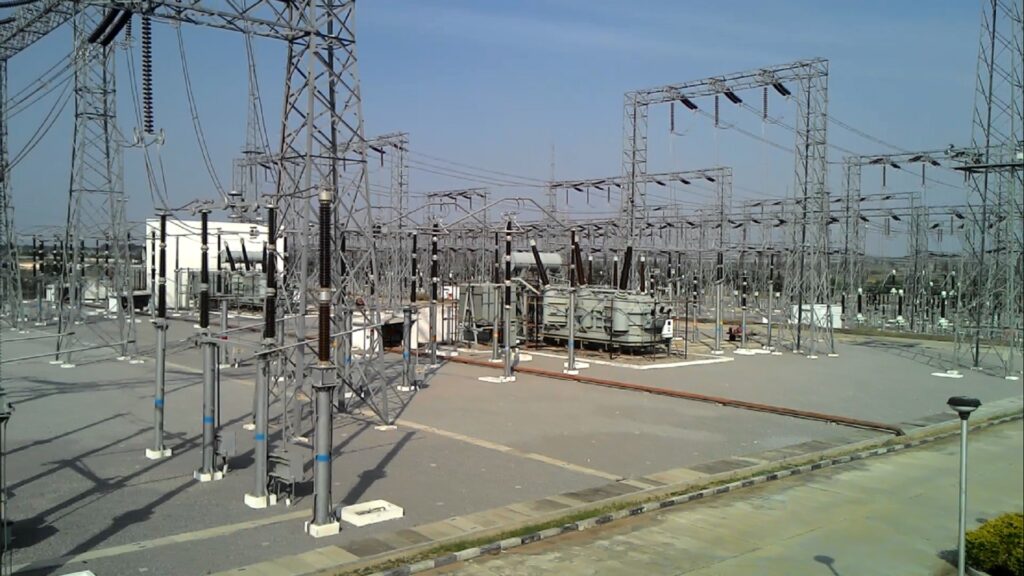
There are many types of electrical substations, based on their applications and their voltage levels.
Now let’s see the definition of an Electrical Substation.
An Electrical Substation is the part of a power system in which the voltage is transformed for transmission, and distribution purposes. Also, there are some switching substations used for load switching.
Now, let’s see the Main Components of an Electrical Substation.
1. Power Transformers:

Power Transformers are used to step up or step down the voltage of electric power. This is generally the costliest equipment of substations.
2. Circuit breakers.

The function of a circuit breaker is to make or break contact between two power terminals. Circuit breakers connect and disconnect two power terminals swiftly without an arc. Mainly it isolates the faulty part of the power system, to avoid damage to the healthy part. Hence faulty part gets isolated and the rest of the system continues to work just fine. Its operation time is in milliseconds. Imagine, if circuit breakers were not there, the whole power system would collapse every time, even for minor faults in the system. Hence Circuit Breaker plays a very important role in the power system.
3. Current Transformers.

A Current Transformer, also called CT, is a type of transformer, which transforms the current level. These are relatively very small in size as compared to power transformers. The main function of the current transformer is to bring down the current level of power system suitable to measure. These are used for Protection and measurement purpose. It is impractical to measure the high current directly, measurement instruments such as relays and meters being delicate will not withstand such a huge amount of current.
4. Potential Transformers.

A Potential Transformer, also called PT, is a type of transformer, which transforms voltage levels. These are relatively very small in size as compared to power transformers, and almost of the same size compared to CTs. Same as in the case of the CTs, it is impractical to measure the high-level voltage of the power system. Hence P Ts are used to bring down voltage levels for measurement. Like CTs, these are also used for Protection and measurement purpose.
5. Isolators.
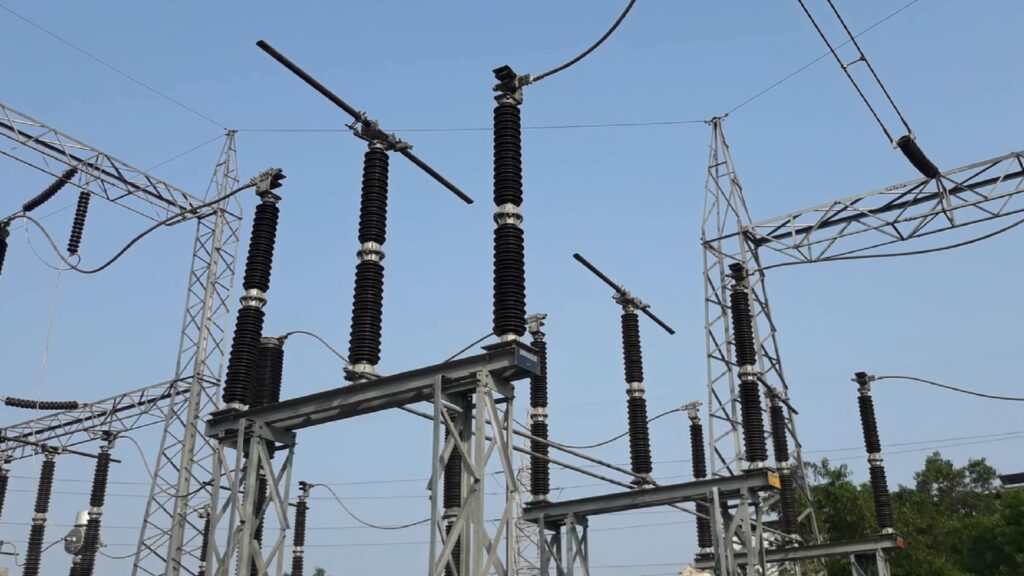
These are generally located next to the circuit breaker. The function of an isolator is to isolate the required part of the system. That is to separate faulty parts from the healthy ones, also to carry out maintenance work. The basic difference between circuit breaker and isolator is, that breaker is meant for online operation i.e. charged circuits, whereas isolators are only for offline operations.
6. LA-Lightning Arrestors
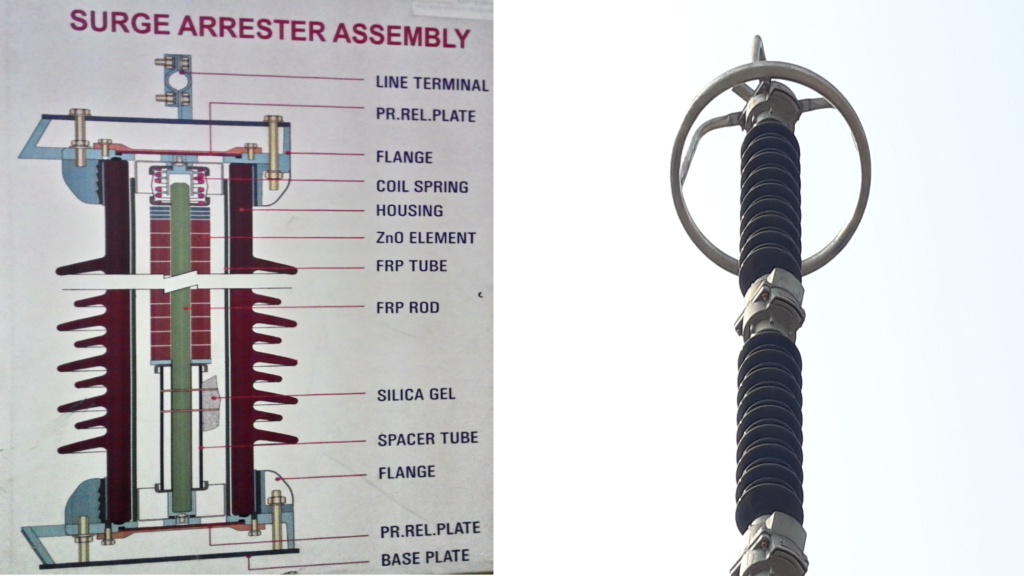
Lightning Arrestors also called Surge Arrestors, are used for the protection of equipment from high voltage surges. High voltage surge occurs due to lightning, switching operations, and power surges. LA prevents the flow of the normal power currents to the ground, but provides a path for high-voltage surges, saving equipment.
7. Wave-trap

Wave traps, also called Line Trap, are cylinder-like structures, connected to a High voltage AC Transmission power Line. These are used for communication purposes. That is to separate high-frequency communication signals from low-frequency power signals.
8. Control Room
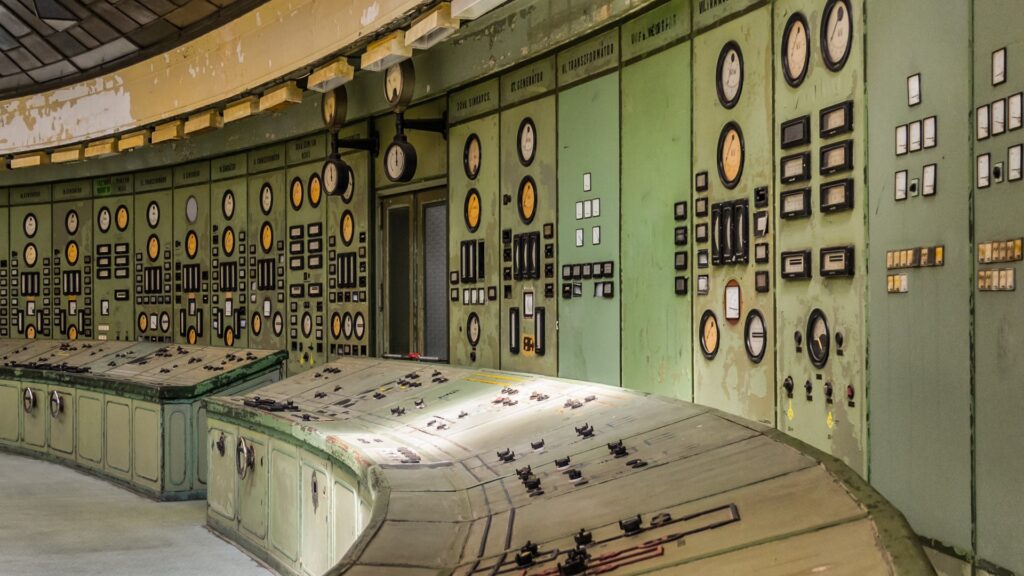
As the name says, the control room is the place where all controlling activities of the substation take place. All Important activities such as power flow monitoring and necessary operations are carried out in the control room. SCADA, Relay, and control panels are placed in the control room.
9. Earthing Mesh
There is earthing mesh consisting of horizontal buried conductors. Functions of earthing mesh are to provide grounding connection to substation equipment and non-current carrying objects, to discharge charge between phase and ground using earthing switches, and to ensure safety against electrical shock, etc.
10. High Mast Tower
There are high mast towers for switch yard lighting.
11. DC Power Supply System
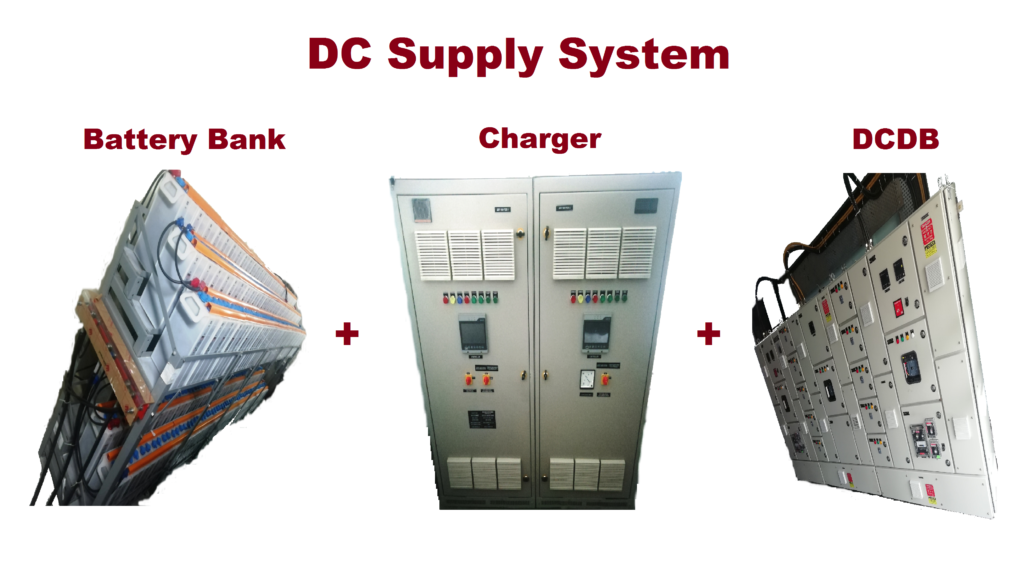
Main components of DC supply system that is Battery bank, Charger, & DCDB called as DC distribution board. DC supply system has a very important role of keeping Substation’s brain on. Meaning all modern numerical protection relays, closing tripping coils, alarms, hooters, indications & communications devices are powered by DC. Also some energy meters are powered by DC. Hence DC supply system keeps all the protection, communication, control and measurement devices running in substation.